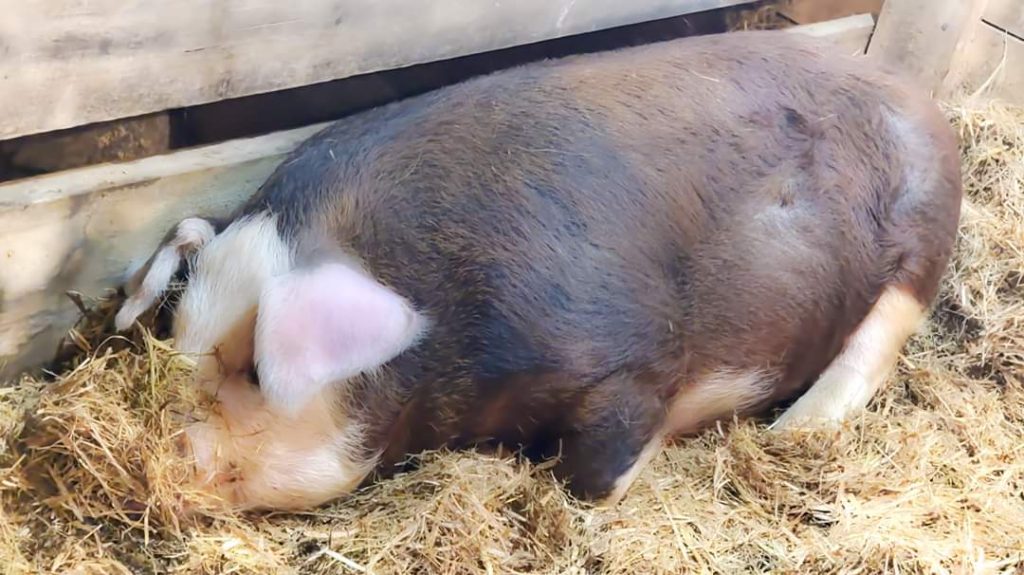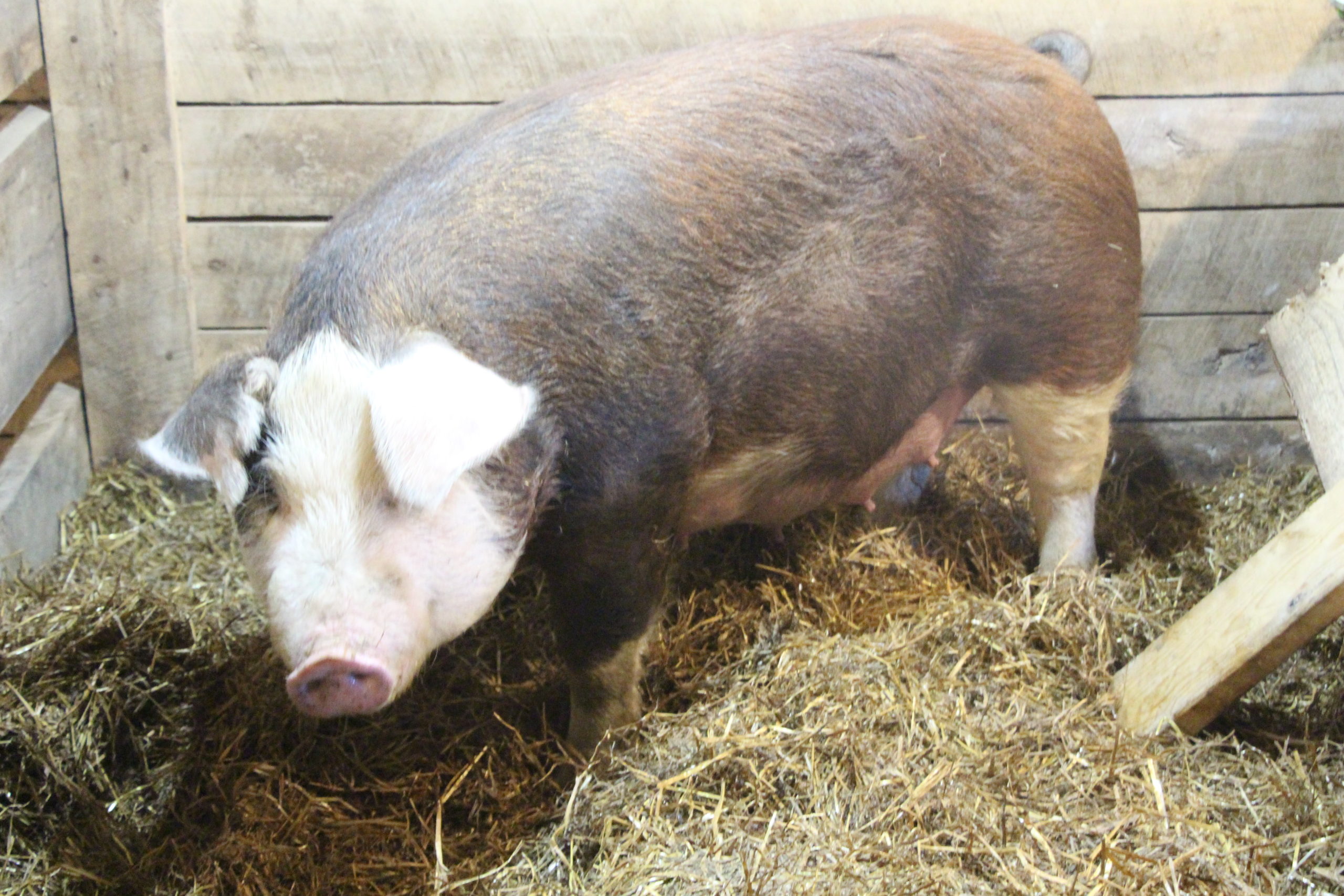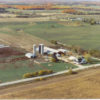Each one of our herd are precious to us. I know that seems contradictory to public opinion of livestock farms lately, but they are. Each one has a personality, spirit, and life, all their own. We spend every day making sure that all of their needs are met- clean comfortable bedding, nutritious food, clean water, and attention (they don’t need this as much as we do ❤).
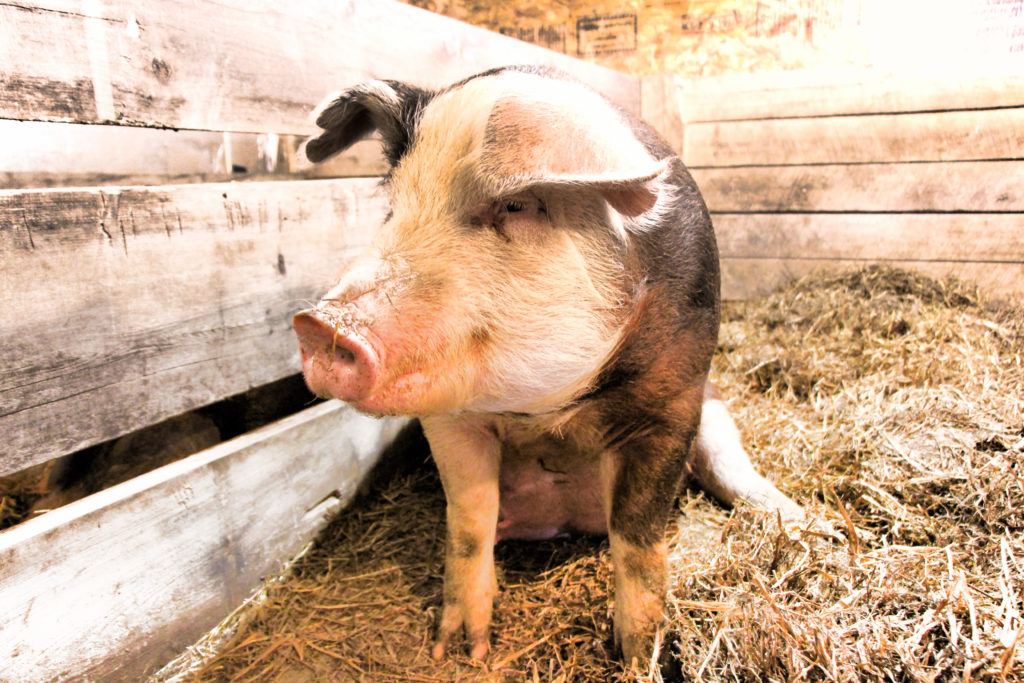
Sally was one of the good ones. She was a little stand-offish when we brought her home, but with time and patience, after a couple weeks, she was comfortable with our presence. I think it was the doughnut holes, but hey- I’ll take it.
Sally was due to farrow (give birth) on or around 2/20/20 and we waited anxiously for her to start labor. The 20th came and passed, but that is not out of the ordinary. While pigs have a 3 mo, 3 wk, 3 day gestation, it’s hard to pinpoint the date the fertilization actually happens.
Early on the morning of the 23rd she started. We noticed some fidgeting on the barn-cam so we got dressed and headed out. The first piglet came quickly, but was breech and was stillborn. These things are common, even expected, but still sad. She labored for a few hours longer, but without progress. We finally decided to check her and discovered that the next piglet was facing belly up and was stuck. Emily, our daughter who has much smaller arms than Andy, reached in and was able to turn the piglet. We were really hoping that it would do the trick, but hours later, the piglet was still stuck.
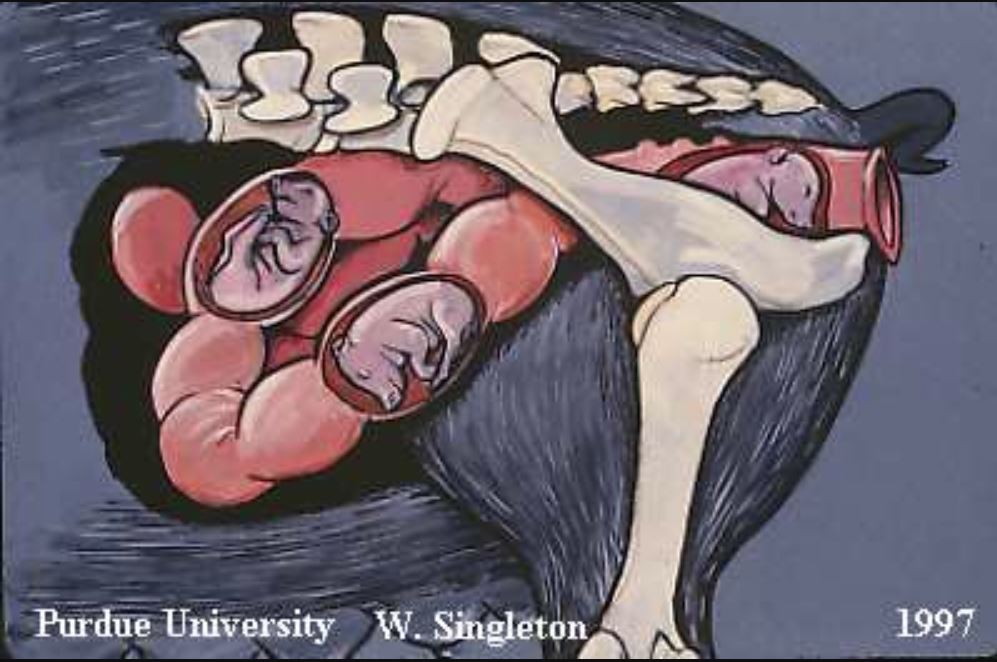
Sally continued to labor for hours, but never made progress. We attempted to help her by pulling the piglet with a tool made specifically for this purpose. The vet was consulted and we tried everything that we could until a decision needed to be made.
Our options were:
- Wait to see if she would eventually pass the piglets over the next few days- dead or alive. This is quite risky for the mom if she can’t pass the piglets, and she would never be bred again even if she survives due to the possibility of a genetic issue that caused the farrowing problems here in the first place. She was already exhausted, so letting this go on would prolong suffering.
- Cesarean- a very risky procedure on a pig that has been in labor for quite some time. Piglets were possibly already past saving, and mom would go to butcher as we would not breed here again due to the possibility of a genetic issue that caused the farrowing problems here in the first place. Also, we’d have the added expense of the surgery.
- Butcher/cesarean- we could possibly save the piglets. We would need colostrum to feed any piglets saved, and bottle feed them milk for a few weeks until they could eat on their own. In this scenario, as with the above two, Sally is still butchered, but at least we have a chance at saving the piglets.
So we had three crappy options if I’m being completely honest- but over and above all of these considerations, was Sally’s welfare and quality of life. She had been struggling for hours and options one and two were both going to be physically very taxing for Sally only to end with her being butchered either way. We have to look at the fiscal implications of each option because this is a business, but she was just so tired and sore, and in the end, we decided on option three.
Option three ensured that Sally’s suffering ended quickly, and gave us a glimmer of hope for some piglets. We went to the Jorasz Family Dairy and got cow colostrum from the freezer, a suitable replacement for pig colostrum. We also collected towels for drying the piglets, a basket to bring them home in, and headed to the butcher with Sally.
When they opened Sally up, we could finally see that we had made the right decision. There were only three piglets inside and they looked like they were about two weeks old already. She never would have been able to pass them- dead or alive. We immediately wished we hadn’t waited so long, but there was just no way of knowing at that time. We still aren’t sure what exactly happened- it was her first birth so we have theories that she was over due, or that because of the small number of piglets they grew too large. We will never know.
The reason we want to share this is to educate our followers, and to share agricultural truths. It’s not always roses… Farmers do care about their animals, we do take their welfare into consideration with every decision we make. We do feel sadness when an animal suffers, but it is never at our hands. Our animals live comfortably, are cared for and loved until they are humanely harvested. Every decision we make is for their good-
Even if we didn’t care at all about our animals- stressed, scared and unkempt animals do not thrive or produce like happy, healthy and calm animals do. It benefits us and them to give them the best care possible, and that is what we do every. day.
Plus, we just love them- always.
Ecclesiastes 3: 1-2
1To every thing there is a season, and a time to every purpose under the heaven:
2 A time to be born, and a time to die; a time to plant, and a time to pluck up that which is planted;
